ABC of AFX
|Cassidy George
In the 032c archive, we highlight the best pieces from over 20 years of printmaking. The dossier in 032c Issue #46 is a deep dive into the Aphex Twin universe. Limited copies are still available for purchase here.
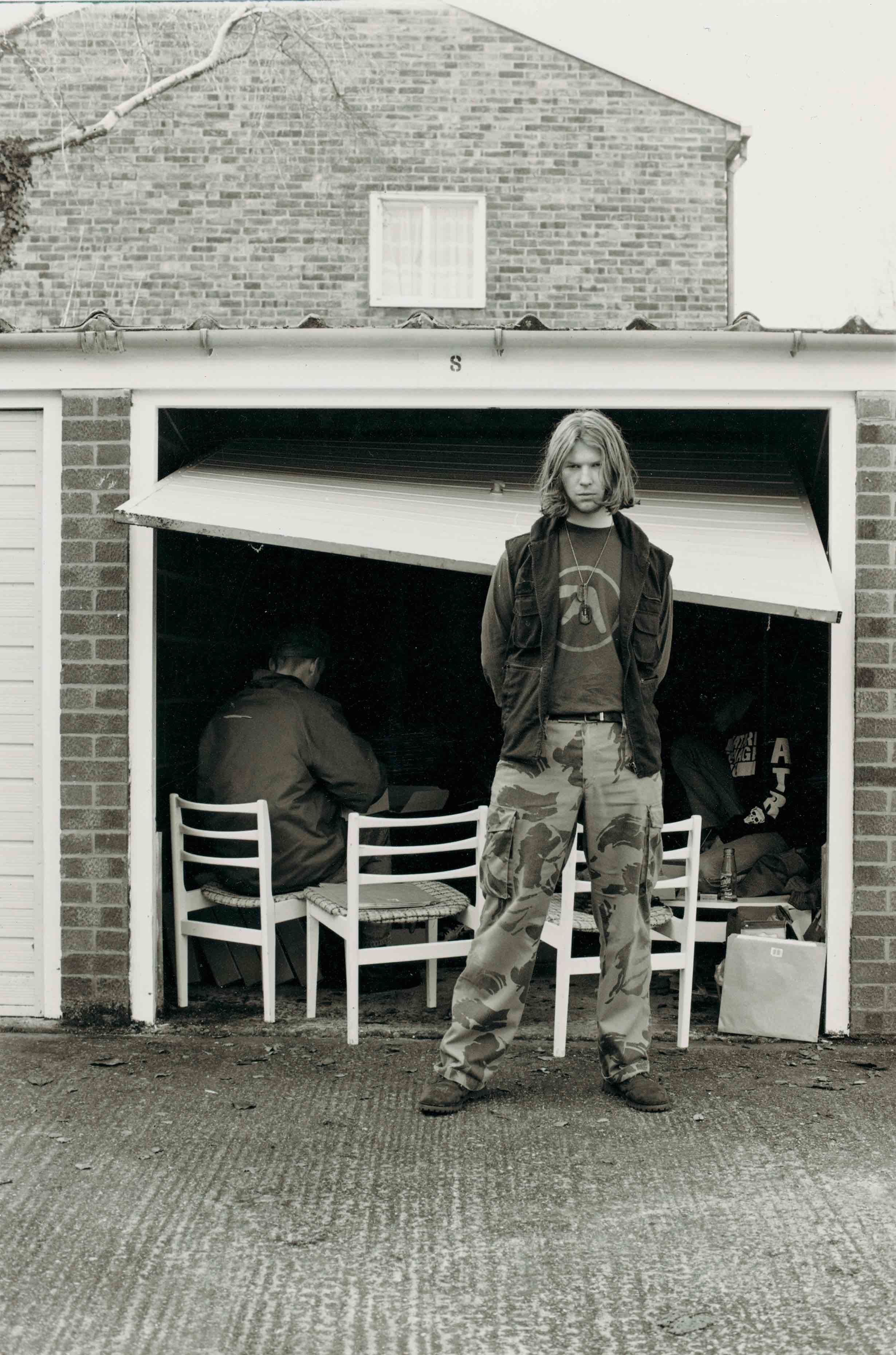
Aphex Twin by Wolfgang Tillmans, 1993. Courtesy of Wolfgang Tillmans.
In 1994, Cornish musician RICHARD D. JAMES – best known by his stage name, APHEX TWIN – was asked to play records at an avant-garde club night in London called Disobey. After positioning himself behind the decks, the electronic music producer pulled out a disc-shaped piece of sandpaper and “played” it with an electric razor in place of a needle, filling the room with ear-shattering noise. James’ cacophonous prank was so well received that he was asked to perform it again in New York, where he played sandpaper before dropping a microphone into a food mixer and hitting BLEND. “After I finished with the food mixer, I threw it over the balcony and hit some kid on the head,” James told NME in 1999. The person he struck with the kitchen appliance approached him afterward – not to threaten legal action, but to ask for an autograph.
Since he started making sounds in the 1980s as a teenager with electronics scavenged from secondhand stores, James has occupied a singular space on the forefront of electronic music production. Earning the nickname “the Mozart of electronic music” as early as 1995, James’ experimental discography is the place where critic Simon Reynolds says that “dance music blossoms into electronic composition.”
Despite granting only a single interview since 2015, conversations around Aphex Twin are near an apex in popular culture. This year, music that James composed in the early 90s has echoed through the galleries at the Tate Modern and soundtracked even the most obtuse Gen Z internet trends (“corecore”). Aphex Twin’s forays into uncharted sonic territory loom in the zeitgeist like an invisible ether. Even those completely unaware of James’ work are enveloped by its impact.
With the help of the friendly alphabet, we have organized everything there is to know about Richard D. James – from Grammy-winning production techniques to feuds, fads, and philosophical positions.
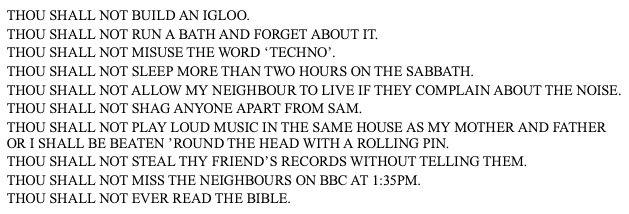
– The Ten Commandments of Aphex Twin, Project X magazine, 1994
A
ACID
It all starts with acid, the house music that Richard D. James immersed himself in at raves in his hometown in Cornwall. The flourishing underground sound made with the squelching kiss of 303 electronic bass synthesizer sequences was pivotal in shaping his first EP, Analogue Bubblebath (1991). James was equally moved by the spirit of liberation and civil disobedience that underscored the UK’s acid house movement. In his most revealing interview to date, known by fans as the Syrobonkers interview with Dave Noyze in 2014, James reflects on the movement’s political undercurrents: “If the law hadn’t stepped in, especially in the UK, rave culture would have almost certainly led to a revolution. It’s total riot music, and people understood that.”
The drug acid was obviously important, too. Later in the interview, James elaborates on LSD’s impact upon his creative process. “I think doing acid is a bit of a brute-force way of getting outside yourself,” he explains, then describes experiences of astral projection, telepathy, heightened senses, feeling no emotion, and a huge increase in smell. “I think I can smell my own brain now.”
ANALORD
Analord is a series of 11 records that James released under his own label, Rephlex, from 2005 to 2009. All of the records were released under the pseudonym AFX, with the exception of Analord 10, which was credited to Aphex Twin. The records in the Analord series are also 032c founder Joerg Koch’s favorite in James’ discography, and many 032c fashion stories over the years have been named after Analord tracks. (At Koch’s insistence, it has been included in the A section.)
AMBIENT
When Brian Eno released Ambient 1: Music for Airports in 1978, he both coined the phrase ambient music and included a definition of the sound in the record’s liner notes, stating that ambient should be “as ignorable as it is interesting.” James’ debut record, Selected Ambient Works 85–92 (1992) – which, if the dates are to be believed, contains music that James made when he was just 13 – proposed a radical new approach to the genre. With bouncy, ebullient beats and emotional melodies, James’ evocative, up-tempo ambient was impossible to ignore – and ushered in a new chapter for the sound.
“When it comes to imbuing machine music with spirituality, Aphex Twin is there with Eno and Kraftwerk,” wrote Simon Reynolds in Melody Maker in 1993. “Although his music shares techno’s inorganic textures and programmed beats, the level at which Richard James is operating is altogether loftier; I don’t hesitate to call it ‘electronic composition.’”
In 1993, James released Selected Ambient Works II, a haunting and spartan record that he described as sounding like “standing in a power station on acid.” Despite still being ambient, the record marked yet another hard shift into new sonic territory. “SAW II was radical in its purism, its refusal to admit anything beyond these slim, quivering frequencies. It’s so rudimental that it verges upon the primeval: music for the latent cave dweller in all of us,” wrote Philip Sherburne for Pitchfork in 2019. “It captured the essence of ambient, and in that act of capturing it, changed it, irrevocably.”
Even though Aphex Twin might be one of the first names that comes to electronic music fans’ minds when they think of ambient, James has always hated the word. In 1997, he told Perfect Sound Forever: “I don’t like the word but I use it on my own records. I thought it was funny. [Typical ambient records] are really just easy listen- ing. If I want to fall asleep or I’m really stoned, I’ll listen to something like that. I really don’t like that kind of stuff now. I like fast stuff to keep my brain interested. I get really bored with loops going around for ages. I need something happening all the time to keep me interested.”
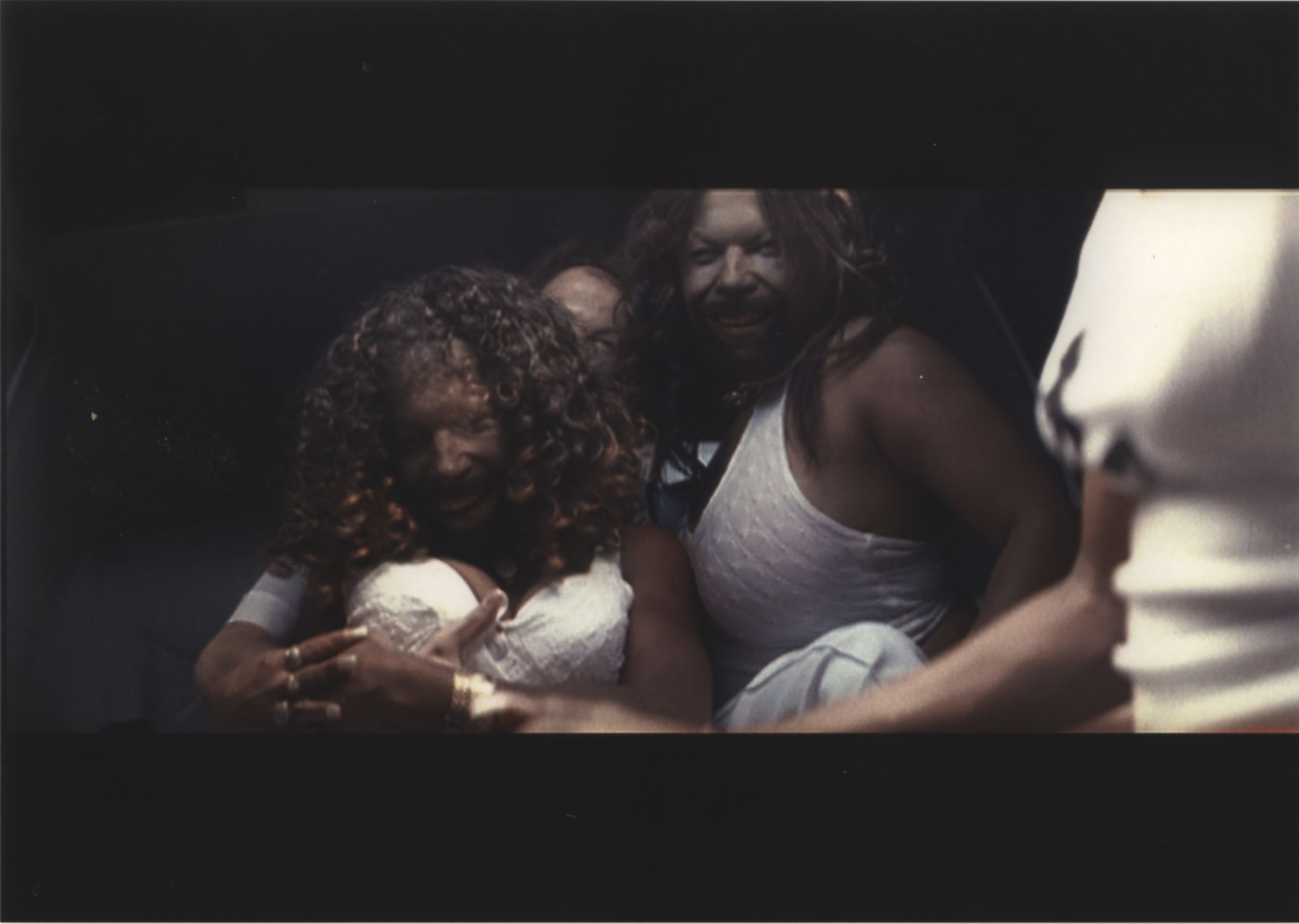
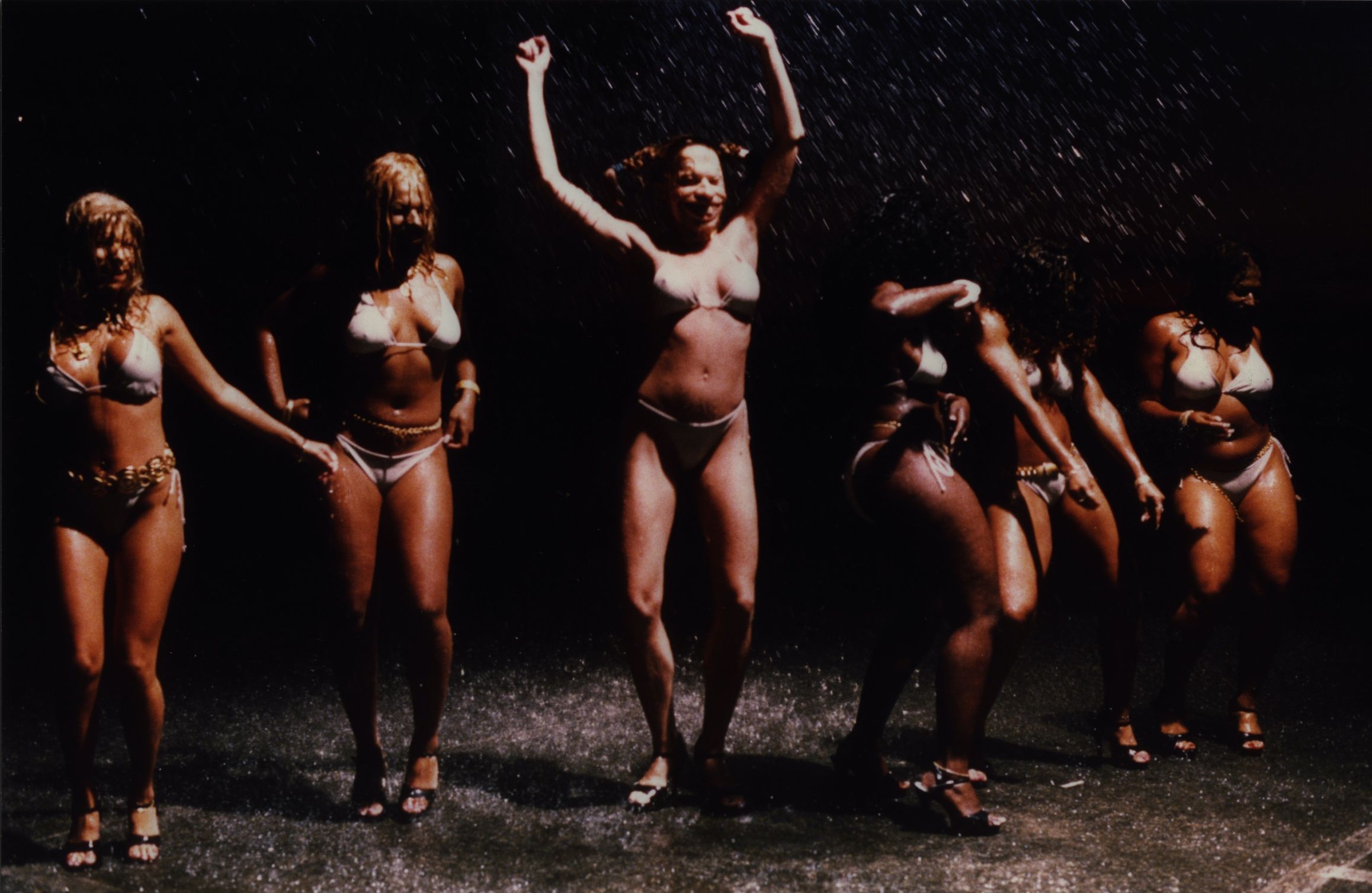

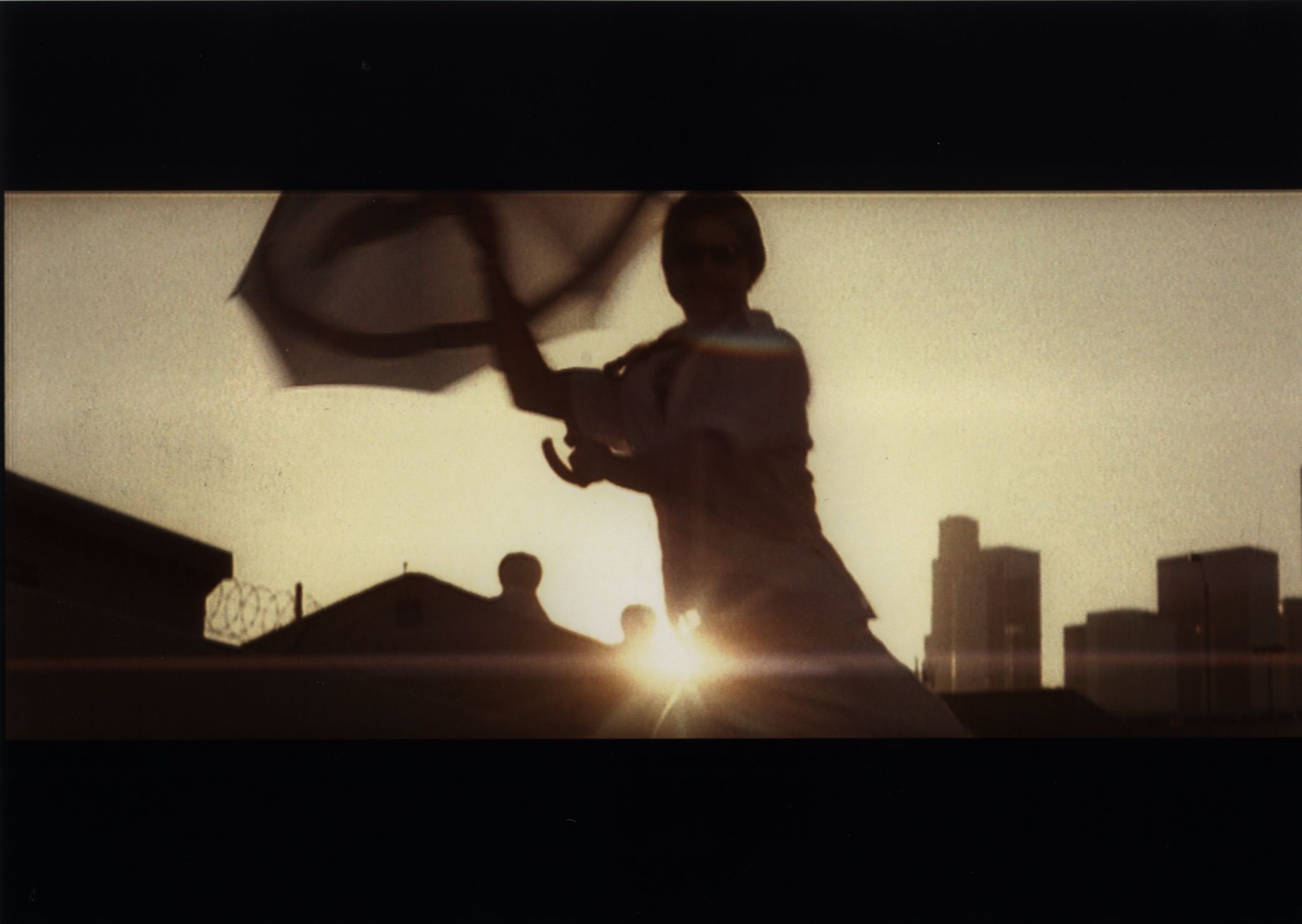
Stills from the “Windowlicker” music video, directed by Chris Cunningham in 1999. Images courtesy of Warp Records.
Marc Weidenbaum, the publisher of the ambient webzine Disquiet, wrote a book about Selected Ambient Works II in 2010. In a 2024 phone call, we spoke about James’ place in the canon.
As a music journalist and ambient music fan, what was it like when Selected Ambient Works II was released?
People didn’t understand it as anything but an anomaly. But as time went on, it was no longer understood as an anomaly. It was understood as a foundational thing. It started to be understood in connection to other works which came after.
Ambient had quieted down to a degree after [Eno’s] Thursday Afternoon (1985), and these records made people realize that ambient not only had historical value but was also meaningful in the present. Many of the people who heard these records also went on to make important stuff. It’s like the classic line about the Velvet Underground: “The Velvet Underground didn’t sell many records, but everyone who bought one went out and started a band.”
Did James’ persona strike you as unique in the industry at that time?
It was peculiar. A lot of Aphex Twin’s ambient music sounds as if you are hearing a party going on [from] the other side of a wall. In electronic terms, there’s a low-pass filter on it. The highs are cut down; there’s a murkiness and ambiguity to it. The playfulness of his identity fit that.
I think people can be charismatic in various ways, and I think James’ charisma was always primed for digital transmission.
Many writers and music critics have called Aphex Twin one of the most important electronic musicians of all time. Is that sensationalism, or do you think that’s a fair assessment of his status?
If you and I were to turn on television and watch a show, film, or commercial today, we would hear background music that was influenced by Aphex Twin, either directly or indirectly. To me, it’s kind of like Shakespeare. Again, if you were to turn on the television – half of the things you would see are influenced by Shakespeare, whether people realize it or not. This includes storylines but also the way he shaped interior monologues, the way he structured tensions and conflicts, and so on. Denying his influence, regardless of whatever you think of the work, is like trying to deny gravity. It is a fulcrum of culture. Aphex Twin – the name, his face, the weird track listings – it’s all interesting. But focusing on these moments of recognition is [beside the point]. The real evidence of his impact is how widespread his thumbprint is. I think true influence is when you’re so influential that people can forget you even existed.
B
BANK
In the late 90s, James purchased a former bank in London’s Elephant and Castle neighbor- hood, a building he claimed had four-foot-thick concrete walls and a vault where he recorded music. The now-demolished bank was located directly across from the club Ministry of Sound. In a 2001 interview, he speaks to Groove about regularly pranking the club’s patrons: “If the queue is long enough, it goes all the way to my house. Sometimes I throw water balloons at the people standing there with my friends. We just do it from the roof. It’s wicked because nobody knows where it comes from. It’s really dark, and you can hide easily.”
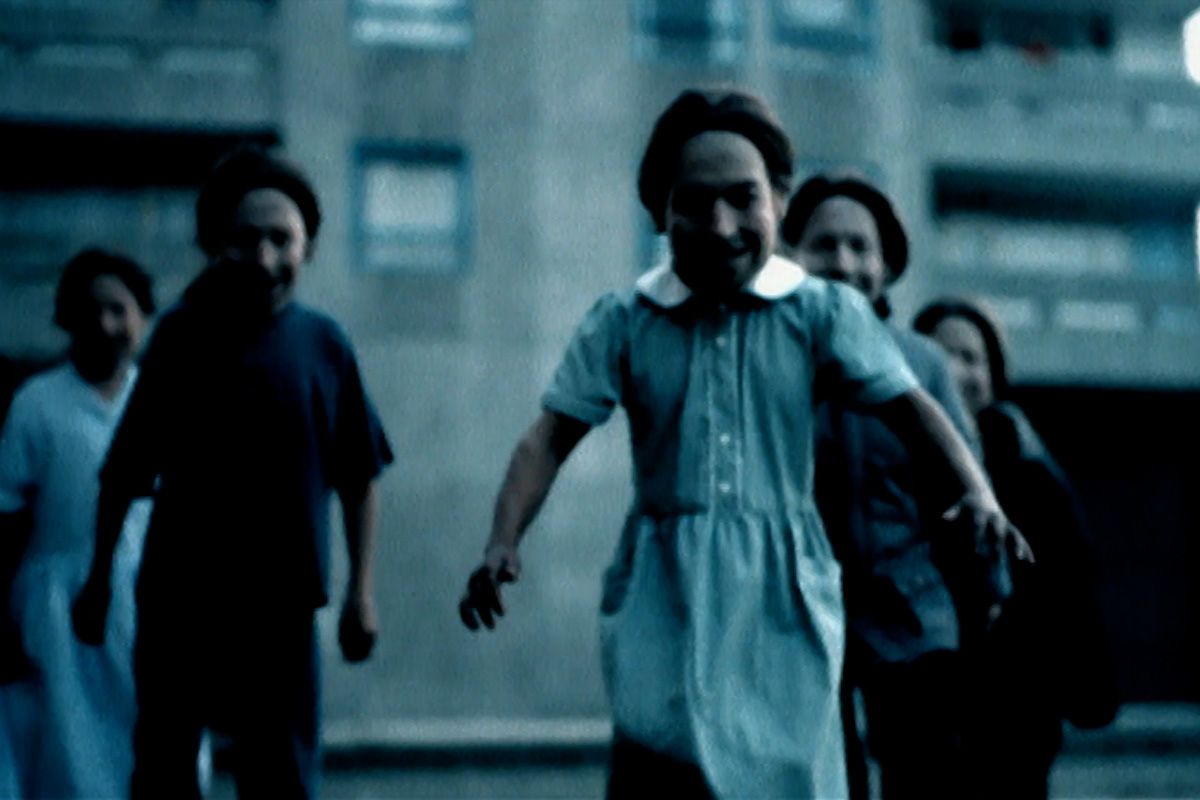



Stills from the “Come to Daddy” music video, directed by Chris Cunningham in 1997. Images courtesy of Warp Records.
C
CHRIS CUNNINGHAM
To create the music videos for “Come to Daddy” and “Windowlicker,” James teamed up with the elusive British director Chris Cunningham, who designed prostheses and worked on special effects for various films in the 90s. Cunningham was later headhunted by director Stanley Kubrick to work on A.I. Artificial Intelligence (2001). He spent a year and a half building prototypes of the lead character, a robot named David.
“Come to Daddy” was shot in 1997, on the same brutalist housing estate where Kubrick shot scenes for A Clockwork Orange (1971). Made for a song that pairs the chilling lyric “I will eat your soul” with a frenetic, anarchic breakbeat, the music video shows a demon that resembles James spawning from a television set while a gang of children wearing masks of James’ grinning face riot and terrorize a neighborhood. Despite the track’s abrasive and unconventional sound, the video became a sensation – largely thanks to MTV, which frequently played it. “For a while, music videos were replacing what avant-garde cinema used to do,” Cunningham told Urban Desires in 1998.
Two years later, James and Cunningham released “Windowlicker,” a ten-minute short film that satirizes West Coast hip-hop videos with surreal and unsettling visuals. Four minutes into the film, a dancer – again wearing a mask of James’ face – emerges from a white stretch limo and performs Michael Jackson–inspired choreography while holding an umbrella emblazoned with the Aphex Twin logo. The dancer is later joined on Venice Beach by a troupe of bikini-clad women, whose faces are either distorted to look like James’ or rendered in even more grotesque and terrifying ways. The “Windowlicker” video also became another MTV favorite and marked James’ biggest mainstream breakthrough to date.

D
DEPROGRAMMING
“I keep forgetting that most people are completely oblivious to how they’re being programmed and controlled from birth onward ... just by being a ‘citizen,’ which essentially locks you into a contract,” James tells Noyze in the Syrobonkers interview. “But people can be made aware of these things, covertly through music, so I don’t need to say much more.”
Continuing the legacy of 20th-century composers such as John Cage, Karlheinz Stockhausen, and Steve Reich, the primary aim of James’ music is not simply to mystify but rather to deprogram our cultural perceptions of what music is and what its function in society should be. This intention can sometimes be felt in a literal sense: Aphex Twin’s music often induces a feeling of disassociation, as though it has untethered you from your body or surroundings. His alien, disorienting arrangements disrupt traditional streams of thought, forcing the psyche into unfamiliar territory – prompting (James hopes) a sort of awakening.
DIGERIDOO
In 1992, James released Digeridoo, an EP that featured a seven-minute acid house track of the same name. Despite sounding uncannily similar to the Aboriginal instrument, the song did not actually sample a didgeridoo. Instead, James engineered an “electronic simulacrum” with synths. According to a 1993 Future Music article, James created the “techno-death” track to help shut down beach raves in Cornwall – the idea being that the track is so insane that no one could possibly want to continue partying after listening and dancing to it. “All the sounds are home-made – four different sounds that evolve and shift throughout,” he says of Digeridoo. “They come from little boxes I built for that track, with a digital drum track over the top.”
DRUKQS
The polarizing 2001 release Drukqs disoriented fans with its extravagant breadth – the record is a musical mezze platter, offering everything from drum ’n’ bass to ambient and classical. Many tracks have titles in Cornish, including “Jynweythek Ylow,” which means “electronic machine music,” and “Gwely Mernans,” which means “death bed.” Drukqs included what is now probably Aphex Twin’s best-known track, “Avril 14th.” The sentimental piano piece has appeared in such films as Sofia Coppola’s Marie Antoinette (2006) and Spike Jonze’s Her (2013). It has also been sampled by musicians such as Ye.
Ye’s sample, which was used in the track “Blame Game” on My Beautiful Dark Twisted Fantasy (2010), was not well received. “He tried to fucking rip me off and claim that he’d written it, and they tried to get away with not paying,” James told Pitchfork in 2014. Despite being helpful and offering to re-create the song for Ye’s team at their desired tempo, James alleges that they replied with this statement: “It’s not yours, it’s ours, and we’re not even asking you any more.” It remains unclear whether James was ever paid for the sample, or if legal action was taken.
Following the release of Drukqs, the Aphex Twin project was completely inactive for the next 13 years.
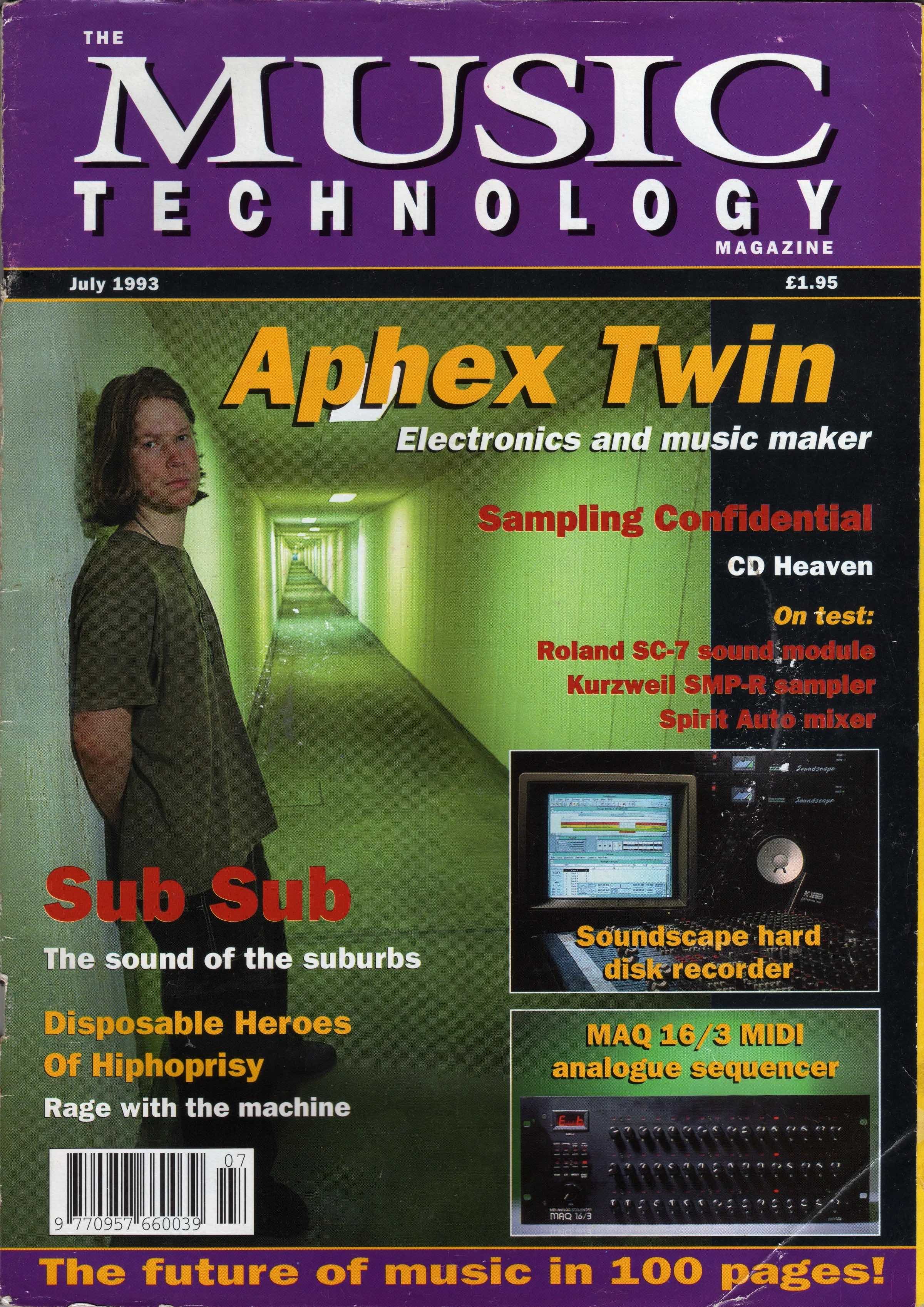
Aphex Twin on the cover of The Music Technology magazine in July 1993.
E
EQUIPMENT
“It’s not about what equipment you have,” James told Pitchfork in 2014. “It’s about what you do with it.”
As someone who has been engineering and modifying his own equipment since his teenage years, James not only invented a new musical language, he created a new musical alphabet. “I just hate the idea of using other people’s equipment – I’ve just got a bit obsessed, I suppose,” he told Future Dance in 1993.
Gear fetishists have spent years attempting to decipher what tools James has used to create his soundscapes. Although he was secretive about his methods for many years, after the release of his 2014 album, Syro, James opened up. That year, he told Groove magazine about his production techniques and preferences:
“On the new album, it’s all hardware, actually. There’s no computer on any tracks, basically. There’s maybe a few plug-ins, and half of it is sequenced on the computer, with the other half being sequenced with hardware. The reason I prefer to work with analog synths is – well, for me it’s like a mathematical thing. A computer can’t do distortion; everything on the computer just sounds perfect. Which is nice if you want to make perfect tracks, but if you don’t, then you’re kind of stuck. Of course, you can sample, you can record things, and you can create sounds, but I really prefer to make sounds on synthesizers.”
In a shocking move, James included an equipment list in the Syro album artwork. Given his penchant for exaggeration, some fans have called it a “disinformation graphic,” suggesting the outrageously long list is just another of James’ practical jokes. But if that list is taken at face value, then James used the following things to create a single album:
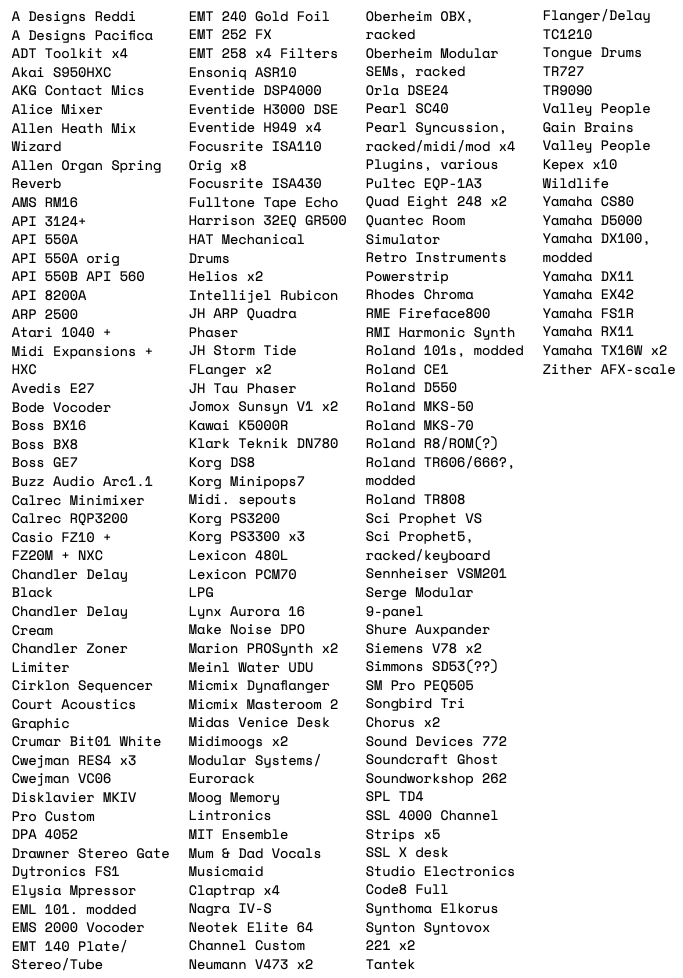
F
FAMILY
James was born in Limerick, Ireland, but his family relocated when his father sought mining work in Cornwall. The voices of James’ parents can be heard throughout his discography, particularly in the earlier work. “I sample my mum and dad loads, they’re still around. It’s quite a weird thought, but I just sample their voices over a long range so when they die, I can still make music with their voices,” he told Crack in 2018.
James has also spoken about his wife and children in interviews, though the veracity of his claims remains questionable. In a 2014 Pitchfork interview, he claimed that his son was already making music, had a Bandcamp account, and even came up with the title for the album Syro. However, in the Syrobonkers interview, published the same year, he had the following conversation:
dave: Also been checking some of your interviews that have started coming out, really cracked me up, all your lies about having kids and wives !
rich: Well you know you gotta play with the conventions ain’t ya, also though, I always kinda fantasised about what it would be like to have kids and get married etc, I know
I probably will never do that, so I guess it’s nice to pretend that you’ve done it, my russian girlfriend was flattered when I started pretending we were married, a lot of people now think we are married which is funny and we just play a long with it most of the time, we had an imaginary wedding and have imaginary kids.

Richard D. James Album, 1996.
G
GENERAL SCHWARZKOPF
In a 1993 article for i-D, writer Kodwo Eshun claims that James has a life-size cardboard cutout of Herbert Norman Schwarzkopf – a US general and “war hero” known for his leadership during the 1991 Gulf War. Schwarzkopf allegedly had an IQ of 170, as well as a fierce temper, which earned him the nickname “Stormin’ Norman.” The general also loved ballet and was an amateur magician.
“Richard James gestures towards his room and then disappears into the kitchen. Naively, I’m struck by how untechno the place is. I don’t know what I expected, something austere yet overloaded, maybe. But Richard James, The Aphex Twin, the Nintendo Neologist, this boyish Menschmachine responsible for the awesome propulsion of Digeridoo and Quoth – his room is so damn ordinary-looking. Against the wall is a life-size cardboard cut-out of General Schwarzkopf. To the left of where I’m sitting are piles of records. Nothing special – Pete Shelley and, er, Microdisney. Videos, magazines and graphic novels form a second carpet on the floor. Richard walks in, humming, heavier than in his photos, and slams on the Sven Väth CD. ‘I haven’t heard this yet,’ he mumbles, chuckling to himself. ‘It’s meant to be alright.’”
GRIN
James’ demonic grin – which is featured on the covers of Richard D. James Album (1996), I Care Because You Do (1995), and Donkey Rhubarb (1995), and in the music videos for “Windowlicker” and “Come to Daddy” – became a hallmark Aphex Twin visual in the mid- to late 90s. This provocative, knowing smile was not just an expression of James’ love for mischief but also a subtle rebellion against industry norms. In a 2001 Groove interview, James reflected on his decision to embrace – and later abandon – the iconic grin: “I did it because in techno, the thing you weren’t supposed to do was be recognized. The unwritten rule was you couldn’t put your face on the sleeve. So I put my face on the sleeve. That’s why I originally did it. But then I got carried away.”
When asked why his face isn’t on the cover of Drukqs, he explained: “It’s totally on purpose. I haven’t done any more videos, and it’s not my fault they keep playing the same ones over and over on MTV or wherever. I don’t want to be forced down people’s throats like other famous people. I don’t want to walk into a shop and hear, ‘Oh no, not that fucking twat!’”
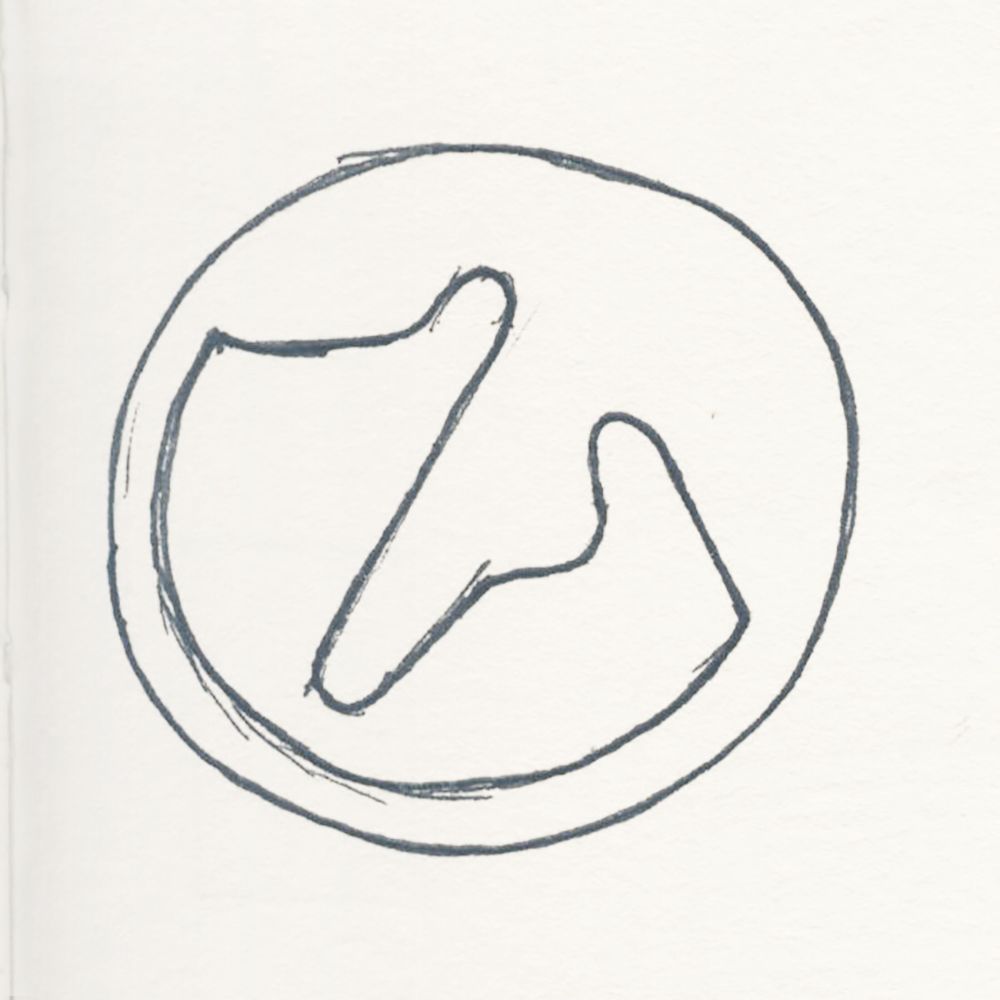
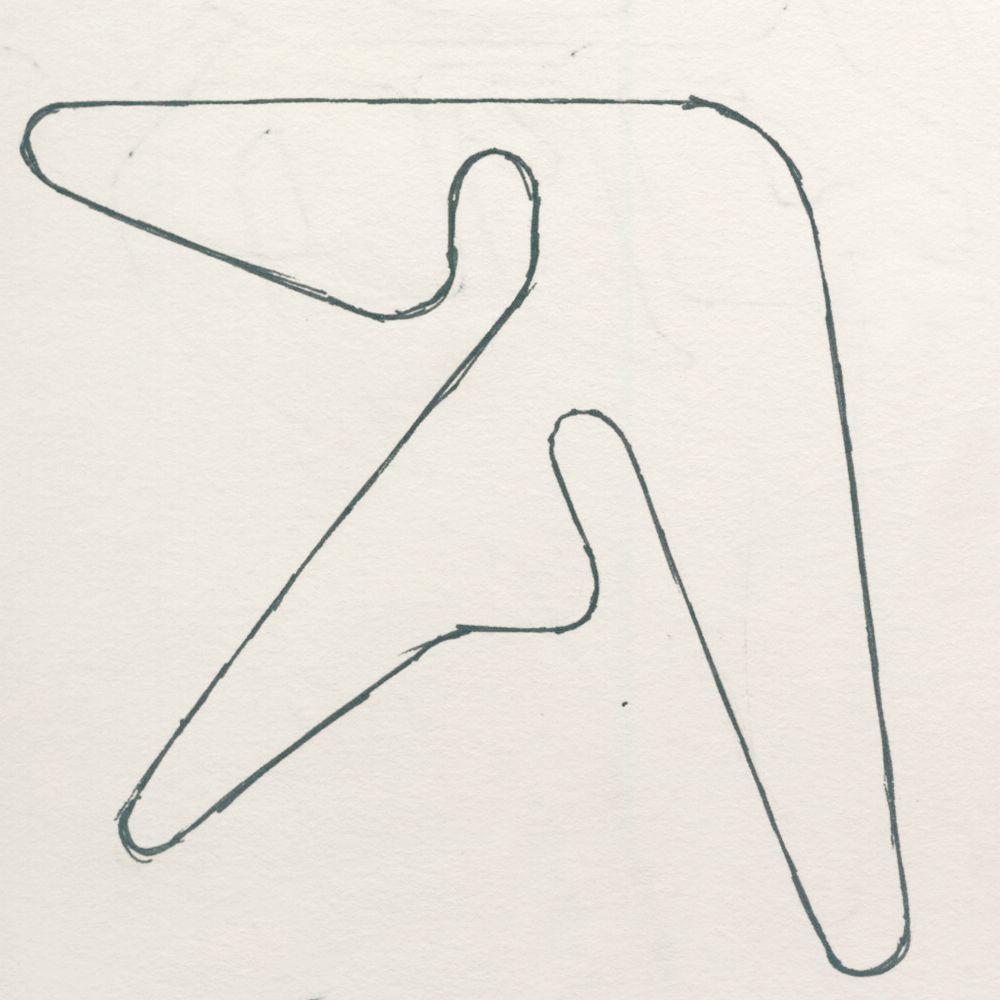
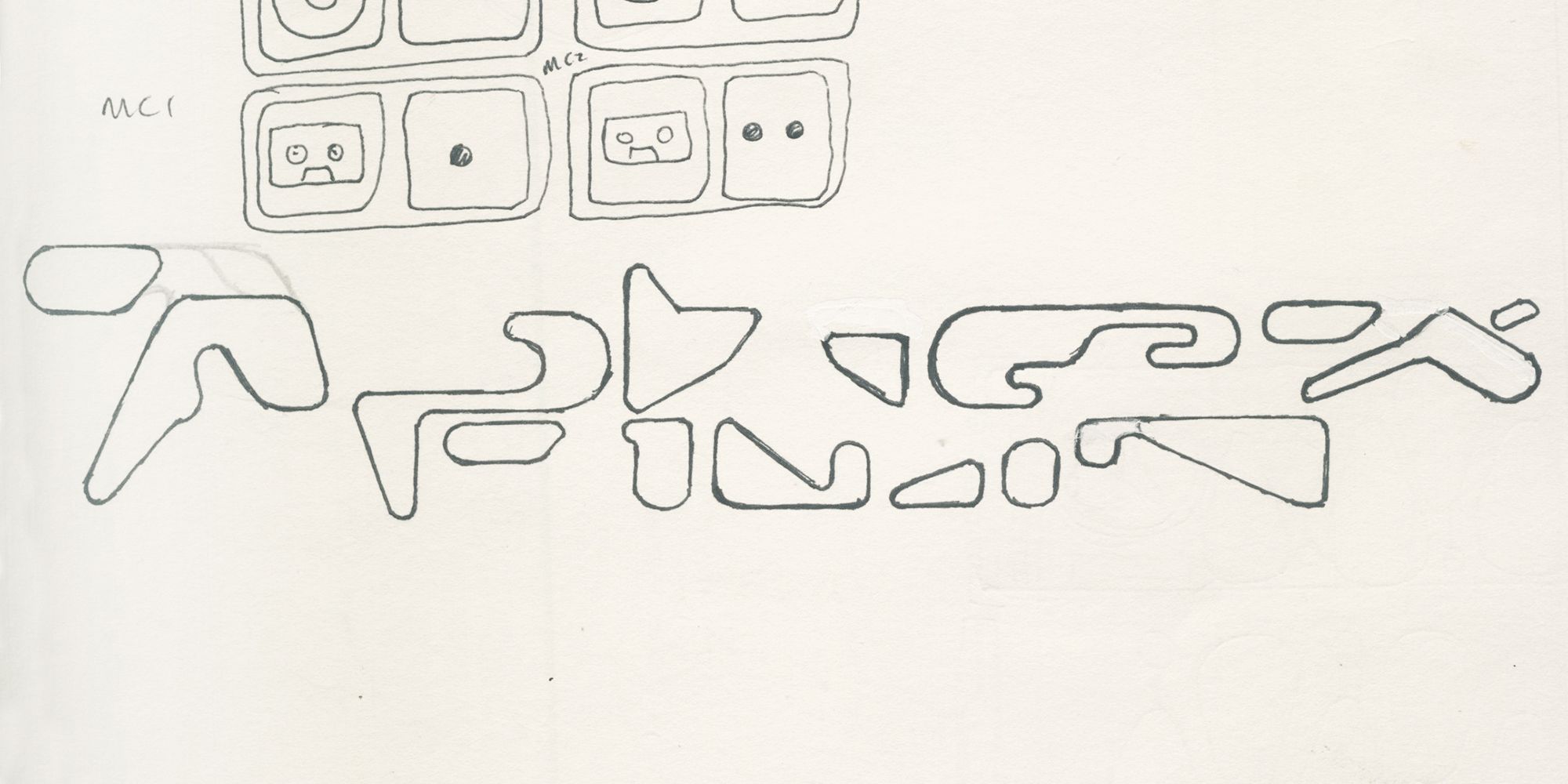
In 1991, James asked his friend Paul Nicholson to create a design for the cover of Selected Ambient Works 85–92. The Aphex Twin logo is the first thing that Nicholson drew. “That has only happened twice in my career. It was a moment of brilliance, for lack of a better term – and it has opened the door for many projects since,” Nicholson said. “I’ve never had to do any self-marketing.”
H
HUMOR
The cover of Aphex Twin’s Windowlicker single (1999), which shows James’ smiling face plastered on the body of a bikini model with H-cup breasts, is the Sistine Chapel of electronic music album art – a certified masterpiece, as far as we are concerned.
James’ twisted sense of humor plays a role in almost every aspect of his artistic persona – and has hallmarked the highlights of his career. In a 2001 Index interview, James expressed frustration that people took the “Come to Daddy” video so seriously. “It started as a joke. I was just hanging around my house, getting pissed, and came up with this crappy death metal jingle. Then it got marketed, a video was made, and this little joke turned into something huge.” The video’s director, Chris Cunningham, echoed this sentiment in a 1998 interview with Urban Desires: “It was supposed to be extremely funny, not extremely scary. That was almost a byproduct. It was so weird that people weren’t laughing; instead, they were saying, ‘Oh, that was really gross.’”
I
INTELLIGENT DANCE MUSIC (IDM)
In 1993, an email list was established to discuss what would come to be known as “intelligent dance music” – IDM for short. The server was administered by Brian Behlendorf, creator of the early electronic music blog Hyperreal.org. The IDM forum, which focused on the works of artists such as Autechre, Squarepusher, μ-Ziq, and Orbital, served as a precursor to internet fan culture and discourse on such platforms as Reddit and Discord. Over time, IDM evolved into a recognized genre in the public perception, with these artists falling under its umbrella.
James mockingly critiqued the term in a 1997 Perfect Sound Forever interview:
“It’s basically saying ‘this is intelligent, and everything else is STUPID.’ It’s really derogatory toward everyone else’s music. [laughs] It makes me laugh, things like that. I don’t use names. I just say that I like something or [that] I don’t.”
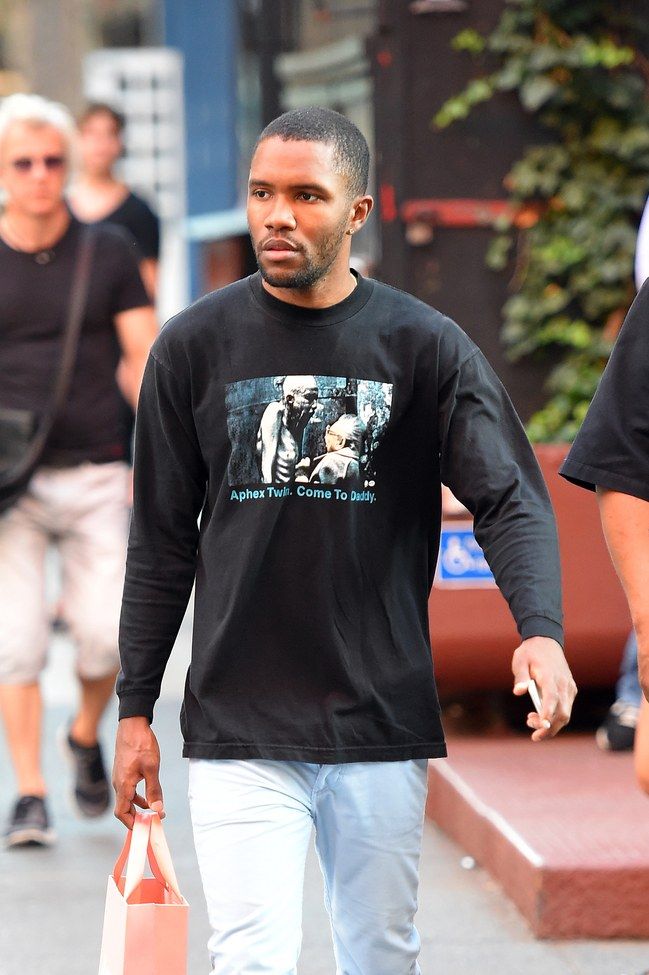


032c cover stars in Aphex Twin merch. Frank Ocean, ROSALIA, and Travis Scott.
J
“JOURNOS”
“Electronic music isn’t meant to be talked about,” James states in a 1995 video interview that resurfaced on YouTube. Throughout his career, he has consistently expressed his disdain for music journalists, whom he believes are more interested in sensationalism than in meaningful discourse about music. “Journos tend to write their articles before they’ve even talked to you, and you get the impression that you don’t need to be there at all,” he says in the Syrobonkers interview. In the early days of his career, his exaggerations were a twofold means of feeding the media machine, allowing him to play the game and prank the press simultaneously.
James’ insistence that people should “just listen to the music” and his claim that he “doesn’t have much to say about it” probably stem from the complexity of his thoughts about music and production, which he feels cannot be adequately expressed in words. In a 2018 interview with Crack, his last significant interview to date, he spoke about it this way: “You’re limited by your language, by your vocabulary.You think with your language, so your language dictates how you think. But when you’re making music, it doesn’t. That’s why I love making music so much.”
James has declined numerous interview requests from 032c over the years, including for this article. We actually decided to write this entire alphabet in the hopes that he would read it, like it, and then finally give us the time of day. Evidently, he didn’t.
JUNGLE
The influence of jungle, an underground elec- tronic genre pioneered by Black British produc- ers in the early 90s, can be heard throughout James’ discography. He has frequently expressed his admiration for the sound and its creators – largely due to its working-class, DIY roots, which he shares. In a 2014 Pitchfork interview, he dis- cussed the genre’s significance and the effects of globalization:
“I used to love jungle. I still think it’s the ultimate genre because the people making it weren’t musicians. The best artists are often those who don’t consider themselves artists; conversely, those who do tend to be the most pretentious and annoying. [laughs] Their priorities are misplaced – they create art for the sake of being artists rather than out of genuine passion. Many jungle producers were car mechanics or painters and decorators – really down-to-earth people.
“For years, I could listen to jungle and draw inspiration from it without them even knowing I existed. It was a separate world back then. But that world doesn’t exist anymore; everything has merged into this global Internet landscape. It’s a real shame. I don’t like it, but that’s globalization for you. It has its benefits, but scenes can no longer develop independently. Now, everyone is aware of everything.”
JUNK
In 1995, James wrote to composer Philip Glass, asking him to create an arrangement for one of his tracks with orchestral instruments. Glass chose “Icct Hedral,” and his rendition appeared on the Donkey Rhubarb EP. Glass invited James to his studio in New York, where they worked on a record together that was never released.
In a 2019 interview with Red Bull Music Academy, Glass was asked what drew him to James’ music. “What I liked about it was that I liked it, but I didn’t understand it. And I’m attracted to things that I don’t understand. He didn’t really play anything. I asked him, ‘Where do your ideas come from?’ And he said, ‘Well, I just go to electronic junk stores, buy whatever junk there is, and see what makes sounds. Then I make music out of it.’ That was his explanation, and I thought it was a pretty good one.”
K
KICKSTARTER
In 2014, a Kickstarter campaign was launched to raise funds for the printing and distribution of a “lost” album that James created under the alias Caustic Window. The campaign raised 67,424 dollars – seven times its original goal. Backers received digital copies of the album, but the original recording was purchased by Markus “Notch” Persson, the creator of Minecraft. He paid 46,300 dollars for the LP. The album was made in 1994 and is a compilation of some of James’ more danceable, club-ready techno – and even includes a splash of proto–tech house. Many of the tracks are the kinds of songs you could hear on Berghain’s main floor on a Sunday morning today (assuming the DJ is good).
L
LUCID DREAMS
“I’ve been able to do it since I was little. Over the years, I’ve explored every possibility in my dreams – the only thing I haven’t attempted is to kill myself. That’s a bit shady.”
In a 1997 interview for The Face, James even claimed that most of the music in Selected Ambient Works II was created in lucid dreams.
“About a year and a half ago, I really wanted to dream tracks. I envisioned myself in the studio, writing a track in my sleep and then waking up to translate it into the real world with actual instruments. Initially, I struggled with it. The main challenge was simply remembering the music. Melodies were relatively easy to recall. I’d fall asleep in my studio for ten minutes and write three tracks – albeit only small segments, not fully finished pieces. I’d wake up and realize I had only been asleep for ten minutes.
“The hardest part is getting the sounds to match; it never comes out quite the same. When you have a nightmare or a strange dream, and you recount it to someone, it often sounds terrible. The same goes for sounds – they tend to lose their essence. When I imagine sounds, they exist in a dreamlike form. As I improve at this process, I can get closer to the actual sounds, but that’s still only about 70 percent of it.”
LUCK
In a 2010 Another Man interview, James is asked if he is superstitious.
“Anything considered bad luck I turn into meaning good luck: for example, I make a point of walking under ladders. You believe what you want to believe, simple as that. If you want to believe that something is bad luck, it just means that you want your life to get worse but you don’t want to admit it. You make your own luck from what you believe and you can pretty much change it to whatever you like; you just have to really believe it – that’s the hard bit. I know all of us have the potential to do almost anything we want but we aren’t encouraged and that is no accident: the human spirit is kept down, and mostly by the media. Education should not be about remembering facts someone else thinks important but how to think and how to be encouraged to do whatever we want – as long as it doesn’t hurt anyone else.”
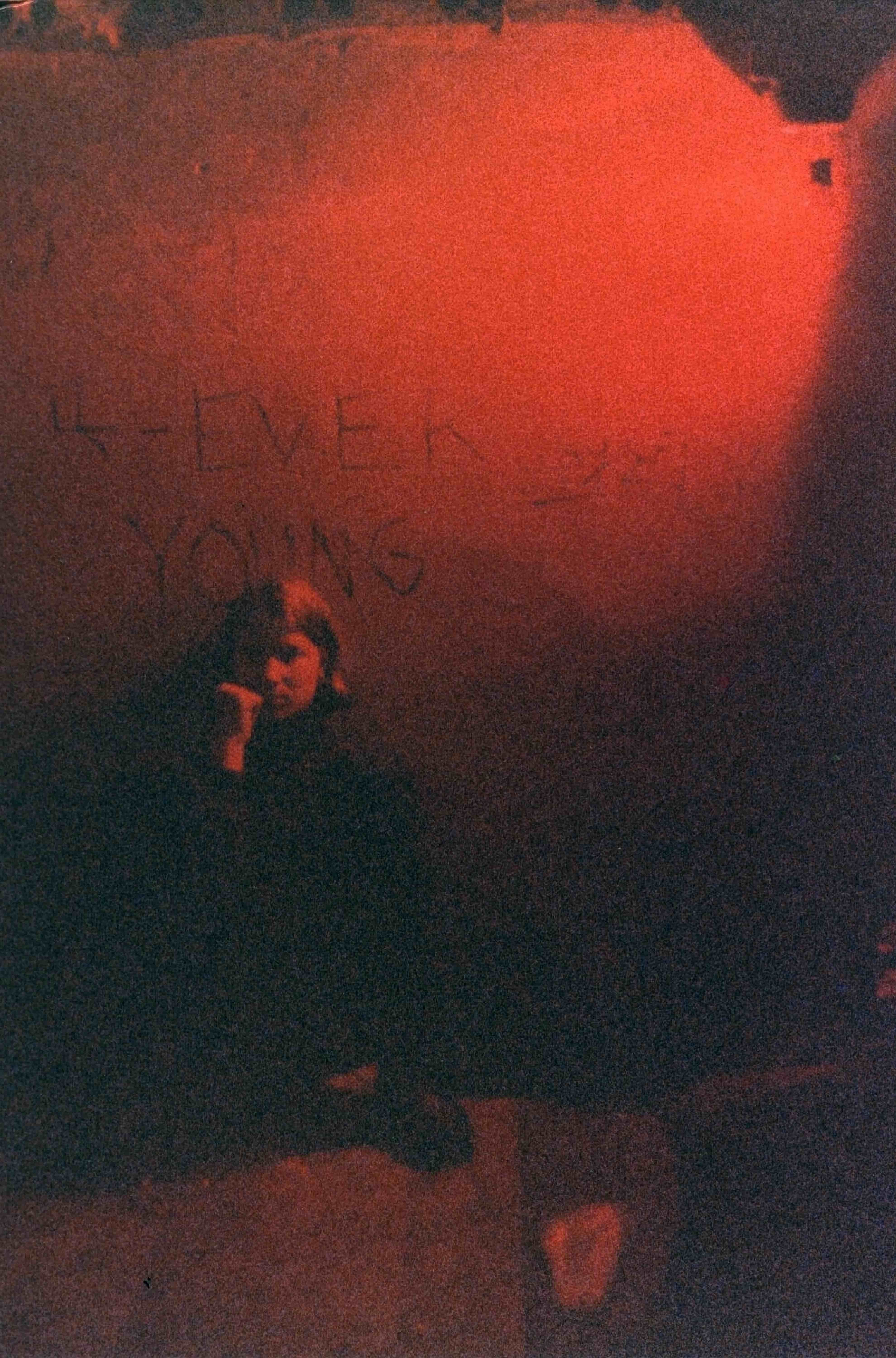
“This is a photo I took before Richard’s first live performance as Aphex Twin in March 1992,” said Nicholson, who accompanied James to around 50 gigs as a dancer. “This location was Tresor in Berlin.”
M
MOBY
When Another Man asked James, in 2010, if he had a musical nemesis, his response was philosophical: “I think if you have an enemy in art, you need to rethink why you are doing it. It’s not a competition. It’s about adding flavors to the earth-mix that weren’t there before.” However, the artist Moby, with whom James has had a long-standing feud, might be an exception. The tension between them dates to 1993, after a shared headline tour. Their relationship soured in the press shortly afterward.
In his 2016 memoir Porcelain, Moby shed light on the conflict:
“I wanted to like Aphex Twin, because I loved his records. But he rarely spoke to anyone, and when he did give interviews, he criticized me for playing guitar on stage. He called me an elitist in the press, when actually I was just dealing with crippling tour-bus-inspired insomnia.”
Moby also accused James and the so-called musical “intelligentsia” of being harmful to the spirit of the scene:
“What I loved about rave culture was the celebration and joy of freeing yourself from all the repression and inhibition. I’ve always been drawn to art that wears its heart on its sleeve, and there was a period in the early ’90s where the intelligentsia tried to kill off that joyful expression of emotion that made rave culture so transcendent.”
Feral, unhinged Aphex Twin tracks such as “Milk Man” and “Gwarek2” are joyful and transcendent, too – they simply cater more to people who are more than likely to be found in an insane asylum than at a Moby concert.

Rare images of James compiled and shared by fans on the Reddit forum r/aphextwin
N
NAMES
In an interview with Groove in 2001, James is asked how much thought he puts into naming his tracks.
“I’ve made some of them while I wrote the track, others were first untitled and then I’ve made up the titles afterwards. You can put out untitled tracks but it’s just a headache for pub- lishers or when people play your tracks on the TV or the radio. They get pissed off and you’ll never get the money either. But I wanted to make the tracks completely unpronouncable. [laughs]”
Some gems include “4 bit 9d api+e+6 [126.26],” “Hy A Scullyas Lyf Adhagrow,” and “Beskhu3epnm.”
In a 1993 article for i-D, writer Kodwo Eshun unpacks the ways in which the mysterious titles enhance Aphex Twin’s lore.
“Richard’s names and titles leave techno’s usual fixations sounding as rustic as Arrested Development supposedly are. Imaginary ancient Greek cities such as Delphium ... meet fabulous chemistry abbreviations [such as] Xtal and Tha. Just as the title of an abstract painting by Pollock or Rothko won’t tell you about the actual painting but ... will set up a resonance, the same goes for Aphex’s titles. They act as word graphics, name images which hover in your memory as you listen. ‘I just really like the look of certain words. I try and match words up. Sometimes they exist. Most of the time, I just make them up from nothing or take bits of old words and just join them.’”
NICHOLSON
Paul Nicholson befriended James in the early 90s. He not only designed the iconic Aphex Twin logo in 1991 but also toured with him as a dancer in the years that followed. Via phone, Nicholson reflected on their relationship.
How did James discover your design work?
When we met, electronic music – especially the kind Richard was producing – was still a very niche scene. We shared a lot of common ground in our taste in music and sense of humor. We both loved “taking the piss,” as the English say. At the time, Richard was studying electronic engineering at Kingston University, where I was studying graphic design. Eventually, I showed him some examples of my work.
When Selected Ambient Works 85–92 was in production, the label asked Richard for artwork. He came to me and said, “I need a logo,” so I designed one, and it ended up on the album’s cover. In design, it’s typical to go through several submissions and iterations – five, six, or more. But this was the first thing I drew, and Richard liked it immediately. It’s remained unchanged ever since. There were no other versions.
Despite being created in 1991, the Aphex Twin logo still feels very contemporary – even futuristic.
When people look at the logo, they don’t think, “This is so 90s,” because it wasn’t created with any particular trend in fashion or design at the time in mind. I intentionally avoided the style that the Designers Republic were doing for artists like Björk in the 90s. I wanted it to have its own unique identity.
You also toured with him as a dancer in the early 90s. How did that come about?
Richard knew that whenever I went to a club, all I wanted to do was dance – and I would keep going until the lights came on. My style was very physical, and Richard’s live sets at the time were on the faster end, around 180 BPM. I could handle it. When he got his first gig at Tresor in Berlin in March 1992, he didn’t want to be alone on stage. He said, “Come with me to Berlin and just do what you normally do.” In total, I think I did around 50 gigs with him. After one show, I kept dancing even long after Richard finished his set – and ended up in the hospital for severe dehydration!
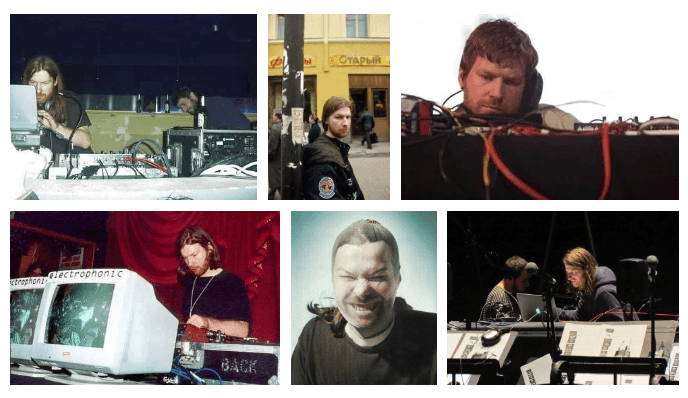
Rare images of James compiled and shared by fans on the Reddit forum r/aphextwin.
O
OTHERWISE KNOWN AS
James has released music under numerous aliases over the course of his career. Among them are:
AFX
Aphex Twin
Blue Calx
Bradley Strider
Brian Tregaskin
Caustic Window
GAK
Karen Tregaskin
Phonic Boy on Dope
Polygon Window
Power-Pill
Q-Chastic
Rutchkfard Games
Smojphace
Soit - P.P.
The Dice Man
The Tuss
user18081971
user48736353001
Many fans believe there are countless aliases that have yet to – or may never be – identified as James’. In a 2014 Pitchfork interview, James is asked why he continues to invent new artist names:
“It’s more interesting for me to stick things out anonymously. You get more of an honest reaction to what you’ve done. There’s no expectation in what people say. But that changes from culture to culture. In America, it’s quite admirable if someone’s done well or been successful at whatever it is. Whereas in Britain, [it’s] not. They only like it when you’re the underdog. As soon as you get famous, they’re like, ‘He thinks he’s fucking God, that guy.’ So in Britain, it’s good for me to be anonymous, because they just think it’s a nobody.”

Rare images of James compiled and shared by fans on the Reddit forum r/aphextwin.
P
PIRELLI
Most people were first introduced to Aphex Twin’s music anonymously, via a 1993 Pirelli television commercial. James’ score for the advertisement was an aggressive, chaotic drill ’n’ bass track that left many scratching their heads. The press soon revealed James as the composer, reporting that he had been paid 50,000 pounds for the piece – boosting his rapidly growing notoriety. James’ work would go on to appear in numer- ous era-defining films and TV shows during the 90s, including Blade, The Doom Generation, 8mm, and The Sopranos.
PURPOSE
In the 2010 Another Man interview, James is asked about his purpose.
ANOTHER MAN: Who is your music for?
APHEX TWIN: On the surface it really is just me. I have noticed that my music does speak to a lot of people and does influence people directly and indirectly; we are all one, so that is obvious I suppose. I’m not an island and I am the result of everything around me like everything else on this planet. I don’t set out for it to be for anyone else but I know it will be heard by a lot of people. I make it mostly to change things and not support things that already exist but this isn’t always the case; sometimes things may have to be reinforced first before you can go elsewhere.
Without music where do you think you’d be?
I tried not making it for ages as I thought maybe I was doing it because I couldn’t think of anything else to do but soon realised that it’s what I’m meant to do. I love to make anything really, it’s what we are here to do – either help each other or create – it’s our divine gift.

Rare images of James compiled and shared by fans on the Reddit forum r/aphextwin.
Q
QUIRKS
In addition to boasting that he rarely sleeps, has synesthesia, experiences lucid dreams, and drives a tank, James’ reluctance to cooperate with the media or comment on his work earned him labels such as “enfant terrible” and “mad genius.” “I’m quite an erratic person,” he told Pitchfork in 2014. “From setups to actually when I’m doing a track, it’s just turning and switching and changing all the time. It can be quite impenetrable for most people because you can’t latch on to something.” In interviews, James also uses the word “lush” with inordinate frequency and has claimed that he hates the color yellow.
QUOTH
In January 1993, James released an album called Surfing on Sine Waves under the moniker Polygon Window. On March 22 that year, he released Quoth – an EP of the track of the same name that appeared on the Surfing album – via Warp Records, but then deleted the release the same day. DJ Magazine reviewed it in a blurb that year:
“Released and deleted on the same day (March 22), so either you’ve got it by now or not, this genuine ‘industrial’ rattler from Aphex Twin Richard D. James’s similarly clear vinyl album ‘Surfing On Sine Waves’ actually clangs and bashes together bits of machinery and metal tools to make its 139bpm Original and 142bpm Wooden Thump Mixes, with the plastic pail drummed slinkier 91.7bpm ‘Bike Pump Meets Bucket’ and gurgling techno 0-139.7-0bpm ‘Iketa’ (decelerating at the end).”

Rare images of James compiled and shared by fans on the Reddit forum r/aphextwin.
R
REPHLEX
James met Grant Wilson-Claridge in 1989 while DJing at the Bowgie, a popular club in Newquay, Cornwall. Two years later, the pair co- founded the prestigious label Rephlex, which re- leased the work of James and peer artists such as Mike Paradinas (aka μ-Ziq), Squarepusher, DMX Krew, Luke Vibert, Future Sound of London, and Black Devil. Much like James himself, the label was “shrouded in mystery from its inception” and focused on promoting music that was both “psychedelic and humorous,” as noted on Rephlex’s website.
Whereas the external world often labeled these artists as “IDM,” Rephlex invented the term “Braindance” to describe its output – with Wilson-Claridge once stating that Braindance was more a “way of life” than it was a musical genre. “Braindance ... encompasses the best elements of all genres, e.g., traditional, classical, electronic music, popular, modern, industrial, ambient, hip-hop, electro, house, techno, breakbeat, hardcore, ragga, garage, drum and bass, etc.” In the promotional text for the label’s 2001 compilation The Braindance Coincidence, Rephlex describes it in less musical terms: “BRAINDANCE is ... boundless; eclectic; entertaining; rephreshing; fulfilling; wholehearted; sensual; stimulating; bold; unconventional; real; imaginary; visionary; essential; debonair ... BRAINDANCE is unique!”
Rephlex ceased operations in 2014.
RICHARD JAMES
One of the most contested aspects of the Aphex Twin mythology is the story of Richard D. James’ stillborn older brother, who was also named Richard James. He has claimed that the cover of his 1996 Girl/Boy EP features a photograph of his brother’s gravesite. In an interview with Alternative Press in 1997, James reflected on the decision to use the image and on his mother’s emotional state: “She basically decided I was going to be Richard James before I was born, not afterward. I can totally understand why she did it; she didn’t want to accept the death of the child.” The initial “D.” in James’ name is what distinguishes the two. In an NME article in 1999, James also claimed this history is the source of his artist name: “That’s where the ‘twin’ comes from. It’s my brother. I’ve always been lucky, you know, flukey. Sometimes I think it’s because he’s watching over me. And sometimes I think that’s bollocks.”
Although James has not confirmed it, many believe the word Aphex in his artist name came from Aphex Systems, a brand of audio process- ing equipment that was founded in Massachusetts in 1975.
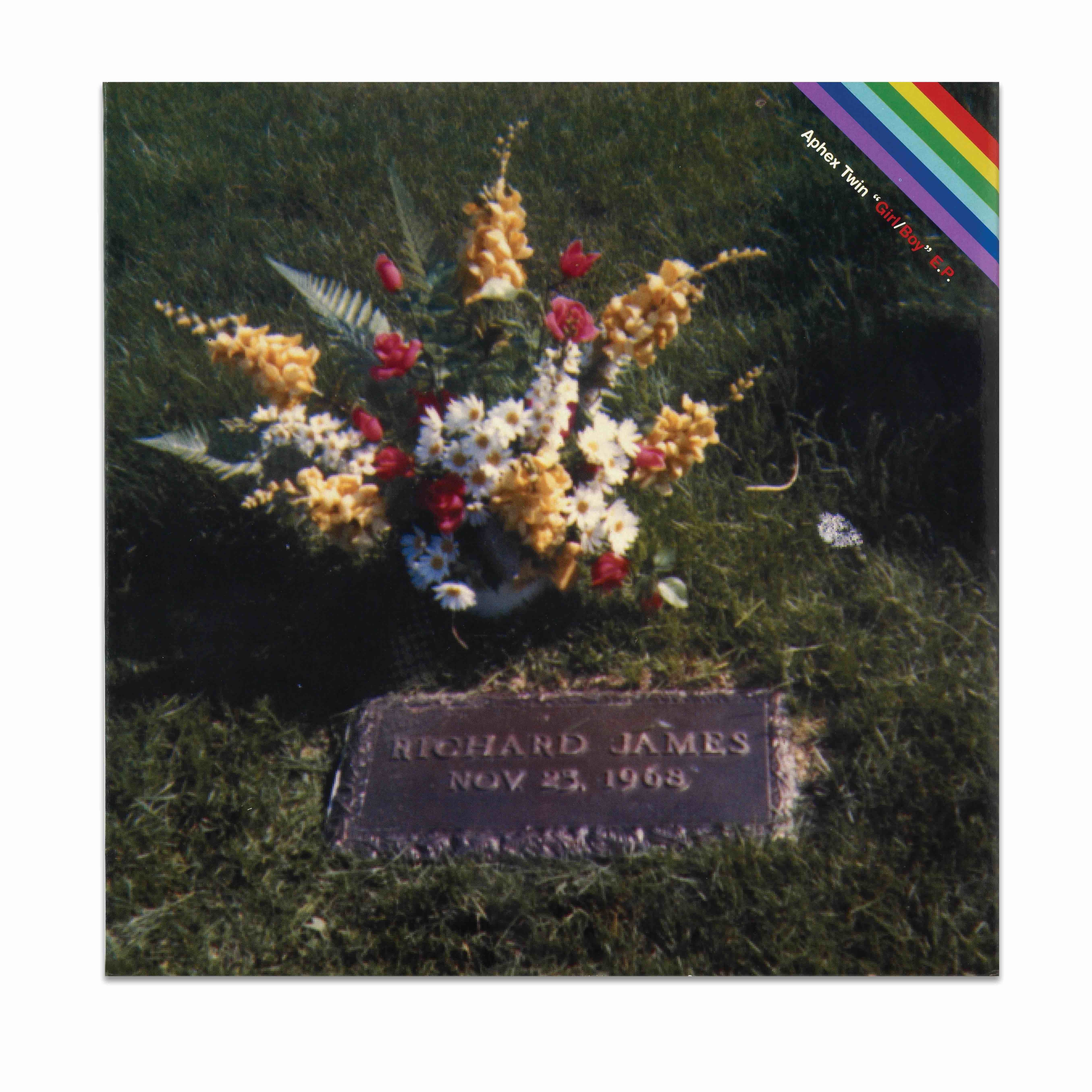
Girl/Boy EP, 1996. The album artwork is supposedly a photograph of the grave of Richard James, his older brother with the same name, who died at birth in 1968. James has also said the use of the word “twin” in his artist name references his relationship with his late brother.
S
SHAGGING
First sexual experience?
It was good, and it was shared with about six other people. In a tent. In a field near my house in Cornwall. I was about 14 or 15, and me and my mates arranged to meet some girls, and took them back to this tent. Everyone had a good time. It wasn’t a big tent – only a two-man.
How do you rate yourself sexually?
If I was to say excellent then that would be fairly boring. But I think I’ll just have to be boring.
What turns you off ?
People who are supposed to be sexy. Like Cleo Rocos. And Jimmy Tarbuck.
Do you get groupies?
I get loads in Germany – a lot of girls. In this country [the UK] it’s more people in glasses who write things down.
Most famous person you’ve shagged?
My village carnival queen.
What’s the sexiest film you’ve ever seen?
Fantasia – not the Disney version. It’s like a compilation porn video one of my friends was given by his mum. That’s sick, isn’t it?
What is a pervert? Are you one?
The most perverted people are those who get sexually excited about computer games, graphics and things. They’re really sad bastards. Am I one? No. But I think everyone’s perverted in their own minds. It’s just that real perverts carry it into reality.
Select magazine (somehow) managed to get James to answer a sex questionnaire in 1993.
SYRO
After a 13-year hiatus, James returned in 2014 with the highly anticipated comeback album Syro. The re-emergence was marked by a cryptic and theatrical promotional campaign: a green blimp adorned with the Aphex Twin logo flew over London, followed by the appearance of Aphex Twin logos in various cities. James then tweeted a link that led to a track listing on the dark web.
The album’s Pitchfork review calls Syro “sixty-five minutes of highly melodic, superbly arranged, precisely mixed and texturally varied electronic music.” Despite sounding “like it could have come from no other artist,” the album also deviated from his past work. The turbulent, “what the fuck is this?” moments that punctuated James’ past discography are not present on Syro, which is a smooth and luxurious listen from start to finish.
Syro was met with critical acclaim and earned James a Grammy for Best Dance/Electronic Album.
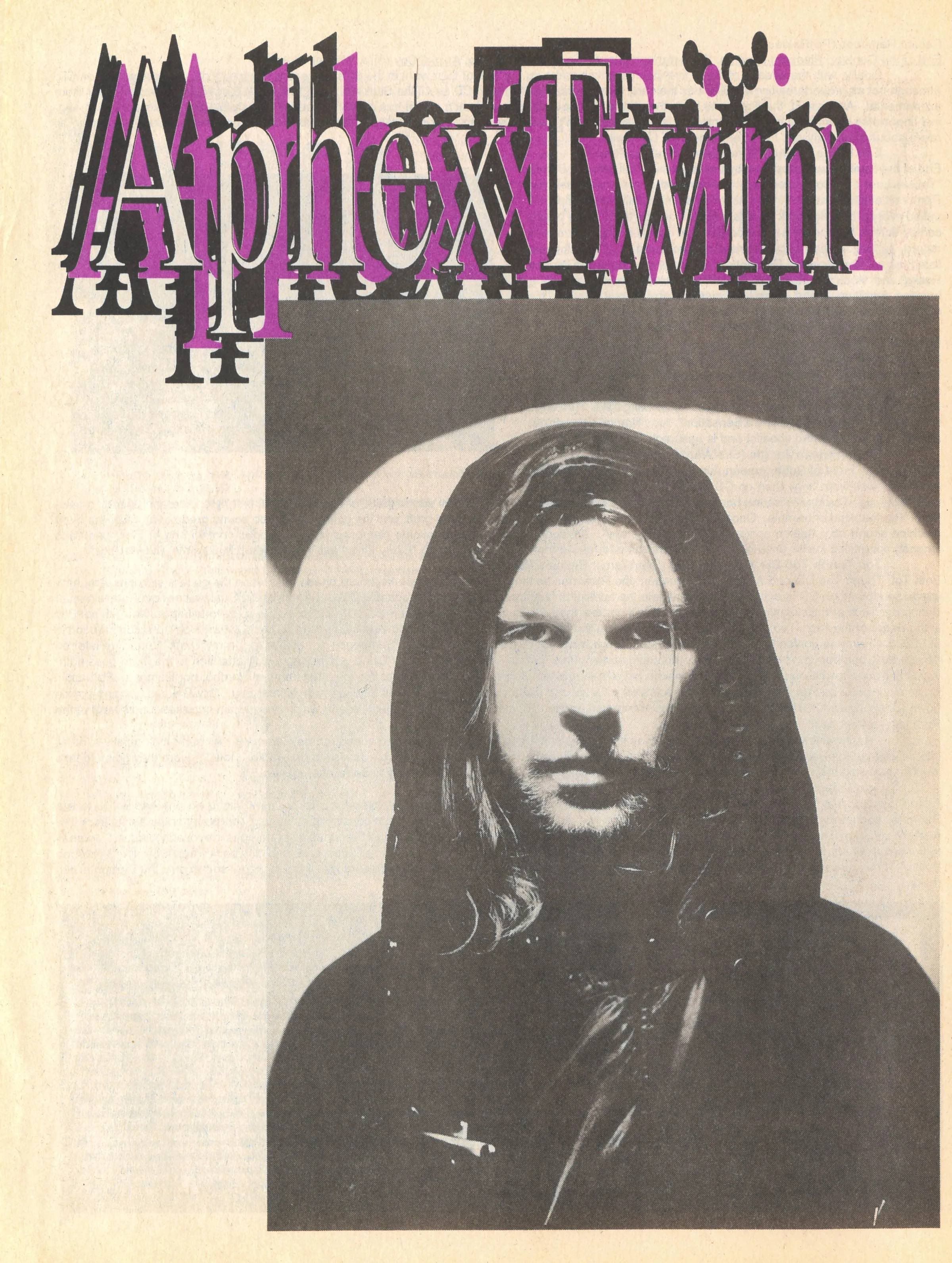
Images from an Aphex Twin feature in Movement Zine, 1994.
T
TANK
One of the most commonly known things about Aphex Twin in the early 90s was that he drove around in a tank. In 2017, Fact magazine reported that the vehicle was a Daimler Ferret Mark 3 armored scout car, developed by the British Army after World War II. Weighing more than 9,500 pounds and larger than an ice cream truck, the Ferret features a welded steel body and a mounted machine gun. “It’s like a womb ... with a gun,” James quipped to Details magazine in 1995. James has also claimed that some of his music incorporates sounds made inside the vehicle. In the fourth track on Richard D. James Album, the “Richard? ... Yep!” sample is a recording of his father calling James to invite him over for tea while he is inside the tank.
TIMBRE
Timbre refers to the unique tonal qualities of sound that distinguish different instruments or voices, even when they are playing or singing the same notes. Many music experts believe that the essence of James’ imprint is a byproduct of his ability to manipulate the subtleties of timbre – harnessing it to evoke both emotional reactions and physical responses. A 1993 article from Melody Maker touches on this skill:
“The key to Richard James’ music, whatever name he’s using at the time, is his fascination for the textures of sounds. He doesn’t so much make tracks but sculptures. It’s as if the melodies and beats have a physical presence. ‘That’s exactly it!’ he beams. ‘I mean, some of the tracks I’ve recorded for ‘Ambient Works 2’ consist of just one sound. I’m trying to make music which surrounds you, which fills the room. I love the idea of the record ending and leaving a huge gap in your head. It’s a shame people don’t really listen to what goes on around them. Everyday sounds, like the sounds in a supermarket, are blanked out, because you’ve heard them so many times before. But if you take a microphone to the super- market, as I often do, and play the tape back at home, it’s f ***ing brilliant.’”
In another interview with Melody Maker the following year, James gets even more specific:
“I also set myself the challenges of recording some of the tracks using one sound, and one sound only. That way, I’ve been able to get down to ultra-pure frequencies and sine waves. When a sound is broken down into the most basic, elementary parts like that, you reach a point where it seems to be coming from all around you rather than just coming straight out of the speaker. It surrounds the whole room and means that you’re able to feel as well as hear the music.”

James and his “tank,” which is actually a Daimler Ferret Mark 3 armored scout car. Year and photographer unknown.
U
UNRELEASED TRACKS
From the start of his career, James has taunted fans with talk of years’ worth of unreleased music, frequently emphasizing how little of his work is actually available to the public.
In a 2001 Groove interview, he revealed that Richard D. James Album was released partly due to a potential leak:
“I lost one of those MP3 players with 282 unreleased tracks of mine and 80 unreleased Squarepusher tracks on it. I left it on a plane. I didn’t lose anything – I had the copies. I think I would’ve committed suicide if I’d lost the masters. Since then, I’ve been keeping my eyes peeled on the internet. I thought they would appear somewhere in about five seconds. I had written ‘Aphex Twin – Unreleased Tracks’ on it! [laughs]”
On more than a few occasions, James has surprised fans with new material. The most dramatic instance to date was in 2015, when he inexplicably uploaded 269 unreleased tracks for free on an anonymous SoundCloud account. “It was really just a spontaneous thing,” he told Crack magazine in 2018. “I’ve got all this music, and I thought if I died, what the fuck would my kids do? What would my wife do? They’d get really stressed out and wouldn’t know what to do with it all. So I just thought I’d give it away – then they don’t have to think about it.”

Rare images of James compiled and shared by fans on the Reddit forum r/aphextwin.
V
VANDEPAPELIERE
Although James is widely known for his longstanding relationship with Warp Records, Selected Ambient Works 85–92 was first released by Renaat Vandepapeliere’s label, R&S Records. In celebration of the album’s 30th anniversary in 2022, Vandepapeliere was interviewed by the dBs Institute.
dBs INSTITUTE: How did you discover Richard’s music and what were your first impressions of him?
RENAAT VANDEPAPELIERE: He’d made his first record Analogue Bubblebath. I heard it on a white label and then I contacted him. I know he sent it to XL [recordings]. Nick [Halkes] is a good friend of ours – he’s the guy who signed The Prodigy. Nick refused it. [laughs] So he came to our home with a box of cassettes. We played it, we liked it. But you know, he’s very – I cannot say more than – very impressive because he has this aura, this charisma.
Am I right in thinking that Richard would have been around 13 or 14 years old when he created some of the earliest recordings on the album?
That’s possible, and there are probably a cou- ple of tracks from that period [on the LP], but that’s a question to ask Richard .... I know that he’d been making his own equipment. So basically, it was all self-made from start to end. Be- cause there was no money to buy expensive computers and synthesizers. So yeah, I mean, there is only one word: ‘impressive’. Because if you’d listen to that album, and think how is it possible to make such a mature album at his age? He had no digital equipment, like DAT machines. Everything had been recorded onto cassette.
Did you ever have any indication of how successful that album would be?
No, it’s just an instinct to do it. We’re not a very commercial label, and I have nothing against commercial labels. But R&S still runs like when I was a young DJ crate digging. You buy this record and say “Wow, it’s great” and if it doesn’t connect to the masses, you know, obviously I still like it and that’s that. Period. That’s the end of it really. It’s not the industry that decides, it’s the people ... and maybe naively I believe that timeless music will survive and something good will always stay.

Rare images of James compiled and shared by fans on the Reddit forum r/aphextwin.
W
WILLY WONKA
The song “We Are the Music Makers” (1992) features a sample of Gene Wilder’s famous line in the 1971 film Willy Wonka & the Chocolate Factory: “We are the music makers, and we are the dreamers of dreams.” The phrase has evolved into an unofficial catchphrase within the Aphex Twin universe because both James and Willy Wonka, another eccentric visionary, invite others into a “world of pure imagination.”
The digital forum We Are the Music Makers (WATMM) – which was named after the track – proudly describes itself as “one of the internet’s longest-running sites for electronic music.” The platform, which has been live for 20-plus years, features more than 55,400 posts about Aphex Twin to date.
WIND
“Wind, through and around things – as wind itself you can’t hear, only feel. I had an extremely moving, enlightening experience when I was 17 after taking some shrooms: lying in a field at night on my own, the wind talked to me through the grass. I find wind incredible; it can be the darkest of dark, totally ancient. It is completely alive but that hasn’t been discovered by mainstream science yet. I could also hear sounds before they happened ... they had a kind of reversed delay with the pitches rising, which got louder until the event happened – that completely changed my perception of time and made me realise that we perceive time in just one way, which is maybe useful to our species but is in no way universal.”
In an interview with Another Man in 2010, James is asked about his favorite sound.

Rare images of James compiled and shared by fans on the Reddit forum r/aphextwin.
X
XTAL
With more than 50 million plays on Spotify alone, the ethereal “Xtal” (1992) is one of Aphex Twin’s most popular tracks. The song title is actually pronounced like “Crystal,” with the X representing the “chris” sound (as it does in “Xmas”). “Xtal” unfolds like a dreamscape and is intricately layered in its production. The haunting vocals are a pitched-down sample from “Evil at Play” (1986) by Steve Jeffries, and one of the percussive layers has been identified by fans as the beat from the 1973 hip hop anthem “Apache” by the Incredible Bongo Band. The song is cine- matic and entrancing, and it instantly shifts the mood of its environment. “Xtal” sounds like what I imagine it feels like to bounce on a cloud at sun- rise, but YouTubers have commented many of their own takes:
@sephyowns: this song feels like a shower
@Claviclecleric: The 21 century began on 9 November 1992
@mr.bassist1283: Does this sound sad when you are happy, and happy when you are sad?
@disekjoumoer: Xtal is as if angels are singing to you as you move through a beam of light.
@marta164: This song is the cure to something that doesn’t exist

Rare images of James compiled and shared by fans on the Reddit forum r/aphextwin.
Y
YOU
In 1995, James released I Care Because You Do on Warp Records, accompanied by a self- portrait he painted after a memorable acid trip. Although the album retains much of the atmospheric quality of Selected Ambient Works 85–92 and SAW II, James joyfully reintroduces his love of violent, chaotic percussion and breakneck tempos. This album includes “Ventolin,” an extremely high-pitched track that the hosts of the podcast Discord & Rhyme describe as a form of “noise terror.” Many of the song titles on the album are anagrams of James’ name and monikers: Aphex Twin (“Wax the Nip”), Richard D. James (“Acrid Avid Jam Shred”), and Caustic Window (“Cow Cud Is a Twin”).
Part of James’ long-standing hatred of ex- plaining his music stems from a lack of interest in limiting the experiences others can have and a preference that they chart their own path and find their own source of meaning. Over the years, he has suggested – both subtly and overtly – that Aphex Twin is more about “you” than it is about him.
In a 2014 interview with Philip Sherburne for Pitchfork, James discussed his release strategy for Syro.
PITCHFORK: What was the thinking behind dis- playing users’ own computer information on the Syro website?
RDJ: It came from a desire to shift the focus away from me at gigs. I didn’t want them to see me. I envisioned performances with mirrors on stage, where the crowd would only see themselves lit up. It’s like, “There you go, it’s you, you cunts.” [laughs] Since we couldn’t use mirrors, we compromised by filming the audience and employing face-mapping, so they essentially see themselves. These websites were just a continuation of that concept – users looking at their own computer screens and thinking, “Oh, that’s my computer.”

Windowlicker, 1999.
Z
ZEALOUS
Nothing about Aphex Twin is casual – neither James’ approach to making music nor the fervent feelings of his fans. The zeal with which James approaches his craft is mirrored in the intensity of the fandom that his work inspires. James has a cult following whose dedication remains unwavering, regardless of his level of public activity or the frequency of his releases. The term fan is in- adequate when referring to a certain sect of his supporters, who are better described as citizen scholars.
Reddit, WATMM, and countless other online forums provide years of evidence of enthusiasts engaging in hours of discussion, dissecting James’ instrumentation, production methods, and techniques.
Mark Cartwright is the creator of Lanner Chronicle, a fan website that is the result of graduate-level archival research on James. In a phone call, Cartwright explains what drives his obsession.
Why did you start Lanner Chronicle?
It started during lockdown as a way to keep my mind off things. I’ve been listening to Richard’s music for 25 years. I suppose I’m a bit of a frustrated historian. Gathering all of this nerdy information in one place allowed me to combine two of my favorite things. The other main reason was to impress my best friend from high school, who was also a fan. I also thought that maybe if Richard sees this website and realizes how much people like his music, he might do another Sound- Cloud dump.
My primary interest has always been the music, but the friend I mentioned was always more interested into the other side of things – like that Richard is a mad Cornish guy with synesthesia who drives around in a tank. Now, with all of the information on my website, you can see that Richard exaggerates, but I don’t think he ever downright lies. A lot of the things that I assumed were lies turned out to be strangely true.
What’s your earliest memory of Aphex Twin?
The first time I heard his music, I didn’t know it was him. It was 1995, and I was 13 years old, watching this Pirelli advertisement that had this terrible music in it. I hated it, I thought it was so abrasive and horrible.
What motivates you to continue putting so much time and effort into this website?
This is where my girlfriend says my Asperger’s comes in, because I can spend an exorbitant amount of time doing things that other people find terribly, terribly boring. Doing things like re- verse image search for hours on end is part of the reason it’s so fun for me.
Back in the day, everyone on the fan websites was either autistic or schizophrenic. [laughs] It was people who were totally weird but very, very interesting. Nowadays, because there’s been a lot more exposure through things like TikTok, you get fans who are more well-adjusted.
Why do you think so many people develop an obsession with James’ music?
Richard is basically his own genre. I think you’d be hard-pressed to find anyone making more interesting or significant music in the latter part of the 20th century or the early 21st century. From my perspective, it has always been clear that the only thing Richard cares about is the music, and that everything else is complete bullshit. I think a lot of people, myself included, find that really refreshing.
Credits
- Text: Cassidy George